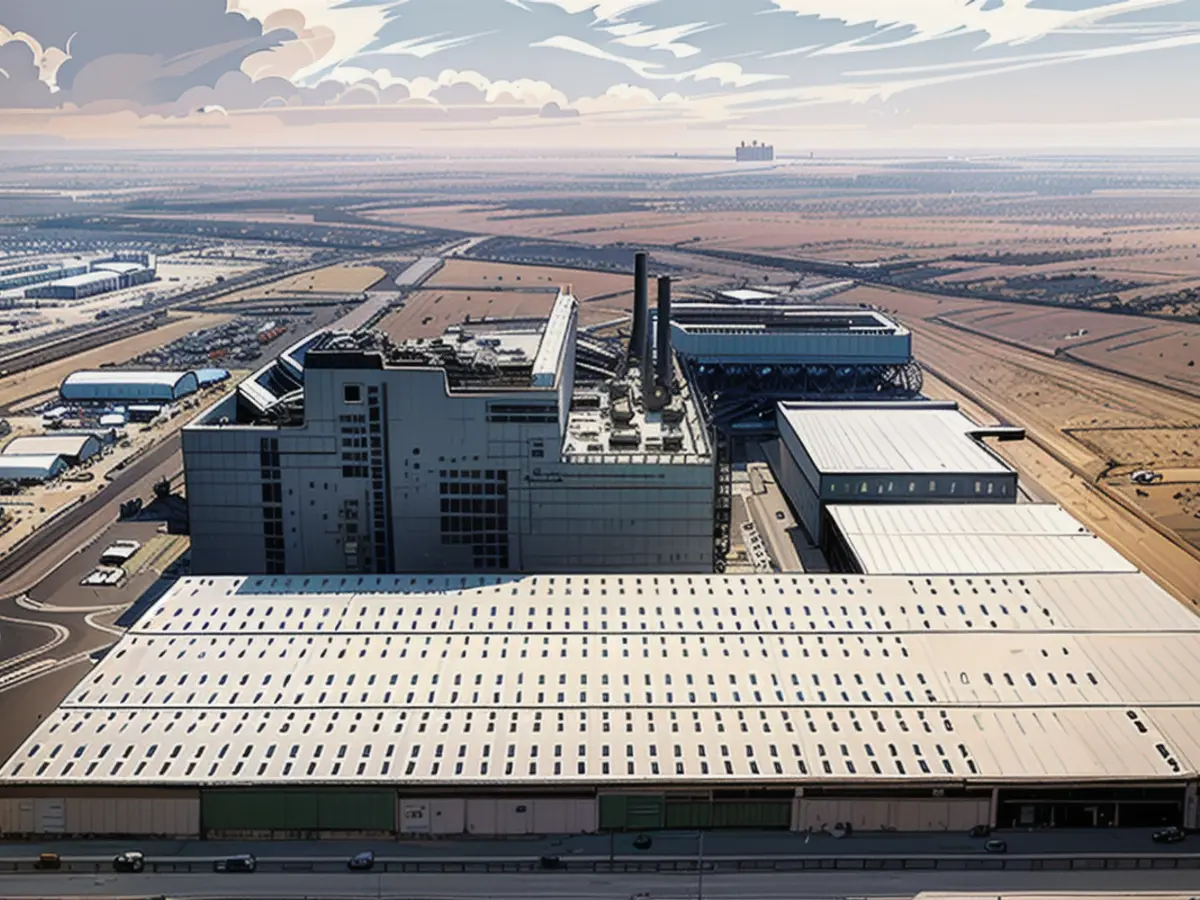The largest waste-to-energy plant globally will provide energy for over 100,000 residences.
It's hard to believe that a used cereal box, banana peel, or deflated football could be used to power your home. In Dubai, though, almost half of discarded waste plays a part in generating energy for homes.
Much of this waste ends up at the Warsan Waste Management Company's plant. CEO Tim Clarke said, "Around 45% of Dubai's total waste ends up at this facility."
The Warsan plant has been operational since March and aims to use 2 million metric tons of garbage every year to produce electricity, powering around 135,000 houses, according to the company.
This type of waste-to-energy facility is known as a plant that turns trash into energy, and it's an adopted method for processing waste across Europe and in countries like Japan, China, and the US. Despite that, the Dubai facility stands out due to its size.
Clarke said, "It's the largest facility of its kind in the world."
"We operate at around 34% efficiency, which is much higher than expected from an energy waste plant. This efficiency is possible due to our large size, which allows us to operate at higher temperatures and pressures," he added.
Converting waste into energy involves three steps: burning trash, using the heat to create steam, and using the steam to drive a turbine, which generates electricity. This process has been in use for over a hundred years, but modern waste-to-energy plants have better control over the pollutants released when garbage is burned. Flue gas treatment filters out toxic substances and prevents them from going into the air.
Clarke explains, "We inject reagents into [a reactor] to strip out all harmful elements like heavy metals, sulfur components, and particles that are then taken away for disposal."
While not all pollutants are filtered out, the Warsan Waste Management Company believes the overall impact is positive since it produces energy while also replacing burning of fossil fuels.
"We emit CO2, but also generate 200 megawatts of electricity that's not having to be produced by a fossil fuel source, which is primarily gas in the UAE," Clarke said. "So we're saving around 1.5 billion tons of carbon dioxide emissions per year."
To further maximize resource extraction, facilities like the Dubai one separate metals for recycling. The mountains of ash left over from burning trash are collected and repurposed for road construction. Out of the 5,500 tons of waste the facility receives daily, only 200 tons of residue that can't be reused remain after processing.
These facilities serve as an alternative to landfills, which are responsible for 11% of global methane emissions. Bryan Staley, CEO of the environmental non-profit Environmental Research and Education Foundation, said, "If we're globally putting more waste into open dumps, we're creating methane that is unmanaged. That methane then is creating a significant emissions challenge."
He added, "Waste-to-energy can create less emissions compared to a landfill setting."
However, some environmental groups like Zero Waste Europe argue that burning waste to generate electricity discourages attempts to reduce waste and increase recycling.
According to a government document released last year, the UAE recycles 20% of its treated waste, but hopes to increase that to 90% by 2050. Staley emphasizes the importance of recycling as the most energy-efficient and environmentally friendly way of managing waste.
"There can be this perception of, well, I'll just throw it in the trash can and it'll be taken care of," Staley said. "But your paper, your plastics, have a much better endpoint if they're recycled and recovered rather than going to a waste energy facility because you can turn those materials into new products."
Read also:
- This will change in December
- Dikes withstand water masses so far - Scholz holds out the prospect of help
- Fireworks and parties ring in 2024 - turn of the year overshadowed by conflicts
- Attacks on ships in the Red Sea: shipping companies avoid important trade route
Despite being an adopted method in Europe and countries like Japan, China, and the US, the Dubai waste-to-energy plant's size sets it apart as the largest in the world. Furthermore, the Middle East, specifically Dubai, has a notable waste-to-energy plant that contributes significantly to powering local residences, reducing reliance on fossil fuels and potentially decreasing carbon emissions.
Source: edition.cnn.com







